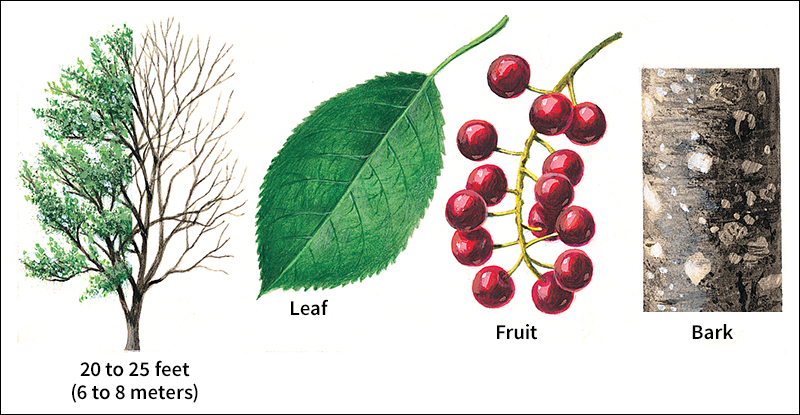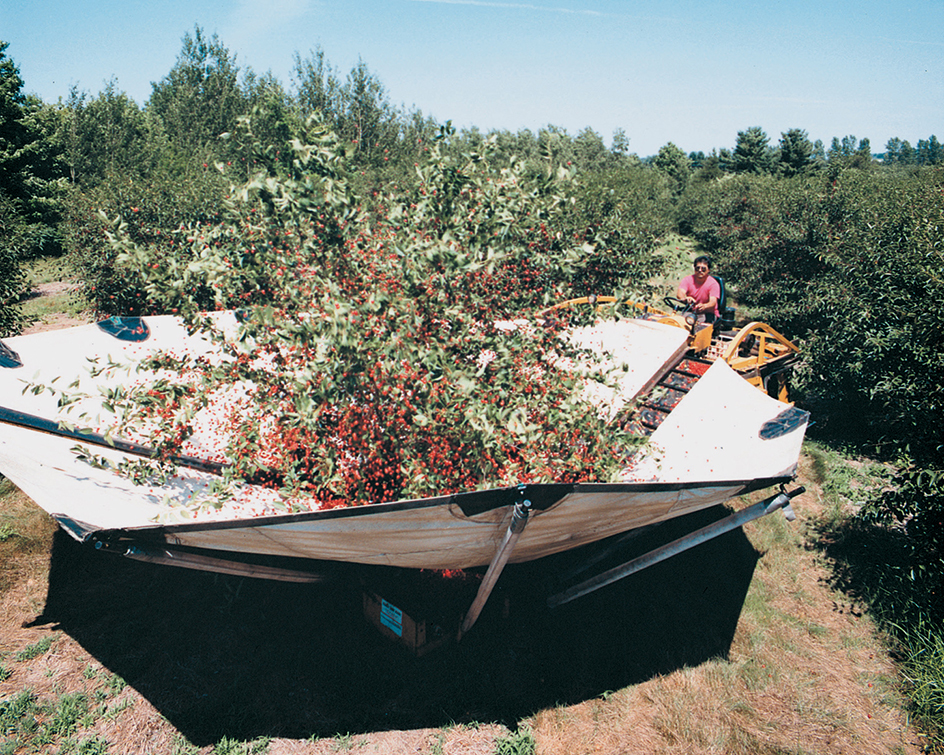Cherry is a small round fruit from a tree of the same name. When ripe, cherry fruits vary in color from yellow to red to black. They typically measure less than 3/4 inch (2 centimeters) wide. Cherries are drupes, fleshy fruits with a hard core called a pit. Cherry trees produce clusters of small white to pink blossoms. Growers cultivate the trees for their fruit and as ornamental plants.

Several different kinds of cherry trees come from Asia, Europe, and North America. They grow throughout the temperate zones—areas between the polar regions and the tropics. Breeders have developed most cherry tree cultivars (varieties) for fruit production from either the sweet cherry tree or the sour cherry tree. One important cultivar, the Duke cherry, was developed by cross-breeding the sweet and sour cherries.
Sweet cherry trees grow tall and stout. Mature trees can measure up to 40 feet (12 meters) high and have a trunk diameter of more than 1 foot (30 centimeters).

Most sweet cherry trees are self-unfruitful—that is, they will produce fruit only after they have been pollinated with pollen from a different sweet cherry cultivar. Thus, fruit growers typically plant at least two different varieties to ensure fruit production. Honey bees help transfer pollen from one cultivar to another.
Growers sell most sweet cherries as fresh fruit, harvesting them by hand. They use machines to harvest cherries sent to processing plants.

Sour cherry trees grow smaller and tolerate colder, drier climates than do sweet cherry trees. Sour cherries are self-fruitful and will produce fruit when pollinated with their own pollen. Growers harvest most sour cherries by using tree-shaking machines. Processors typically use the fruit as pie filling or as maraschino cherries.
Many nurseries cultivate cherry trees as ornamental landscape plants or for their flowers. They use primarily cultivars developed from species native to Asia and eastern Europe. Plants of Asian origin, sometimes called Japanese cherry trees, have abundant delicate blossoms. Mahaleb cherry trees, which originated in eastern Europe, serve as landscape trees in many countries.
Growers develop cherry tree cultivars by taking buds of the most desirable fruiting plants and grafting them onto seedling cherry trees called rootstocks. The use of rootstocks helps to control tree size, which makes harvesting easier. See Grafting.

A number of animals and diseases attack cherry trees. Birds that eat the fruit rank among the most serious pests. Mites, slugs, and such insects as aphids, fruit flies, and scale insects can also damage the crop. Cherry tree diseases include brown rot, verticillium wilt, and leaf spot. Growers control such pests and diseases by planting resistant cultivars and using chemical sprays.
